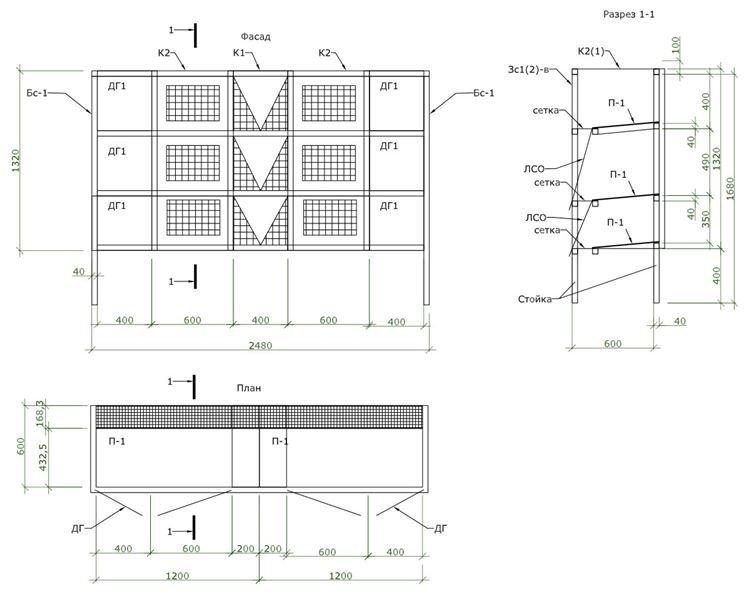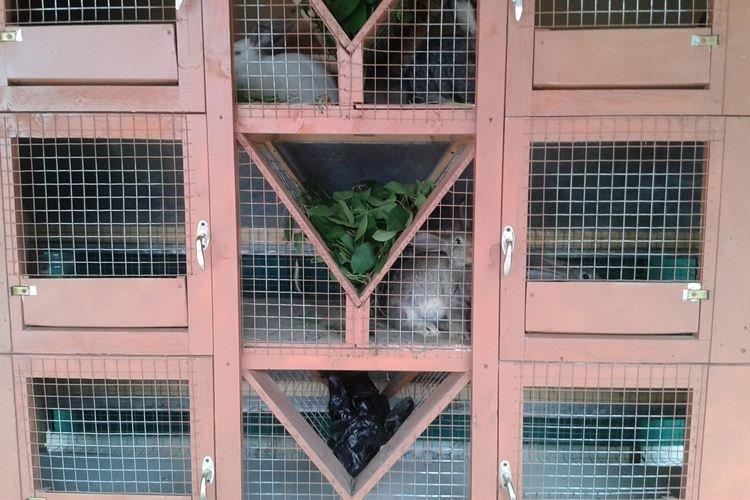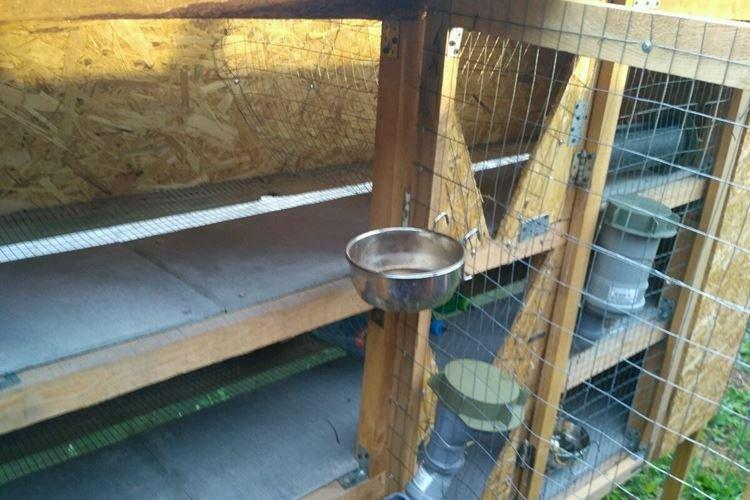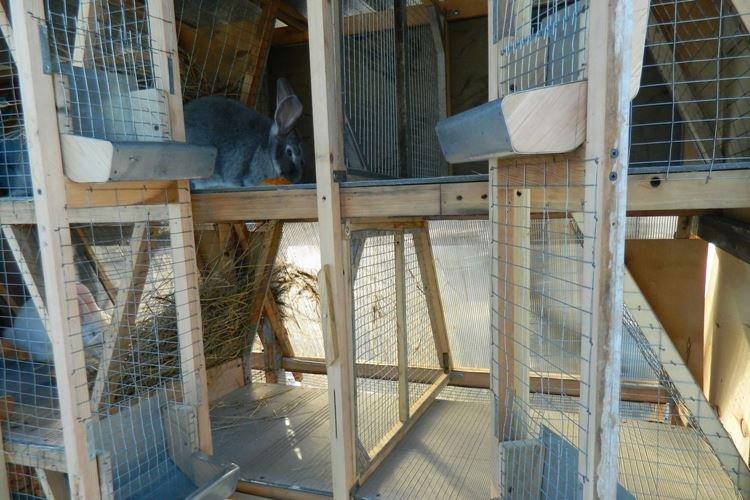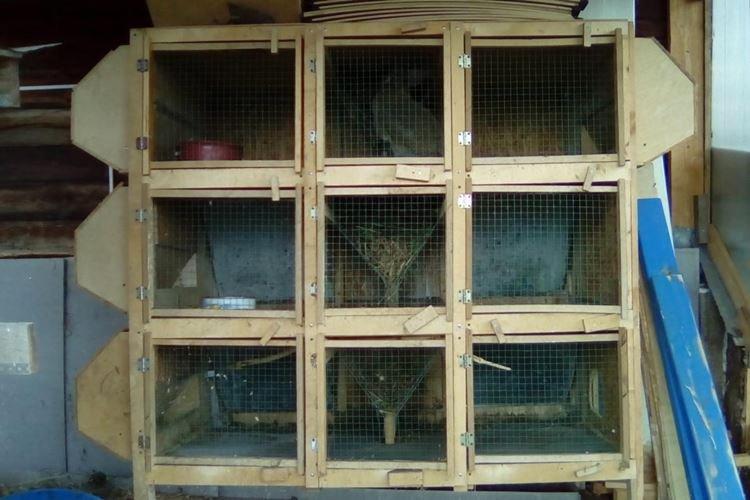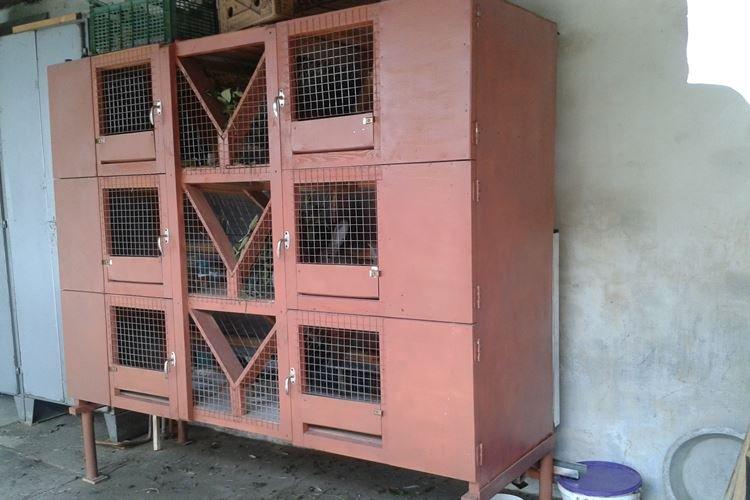
Everyone who breeds rabbits knows for sure that you cannot do without a good cage. If you buy them, this is a continuous expense, and there is also a constant risk that pets will suffer from poor-quality materials or dangerous mounts. We propose to make a cage with your own hands, because nothing special is needed for rabbits. We tell and show!
Types and materials
Keep in mind that you cannot do without cages when breeding domestic rabbits. They are susceptible to diseases, sensitive to weather changes, do not know how to stop in time while eating, and "on free grazing" turn into real pests. After all, it's just not safe for small animals.
In practice, the cages turned out to be much more practical than enclosures. When choosing, take into account who exactly it will be for - for large or dwarf rabbits, young animals, males or females, ornamental breeds. In size, they can be one- or two-tiered, multi-tiered, complex shapes and configurations.
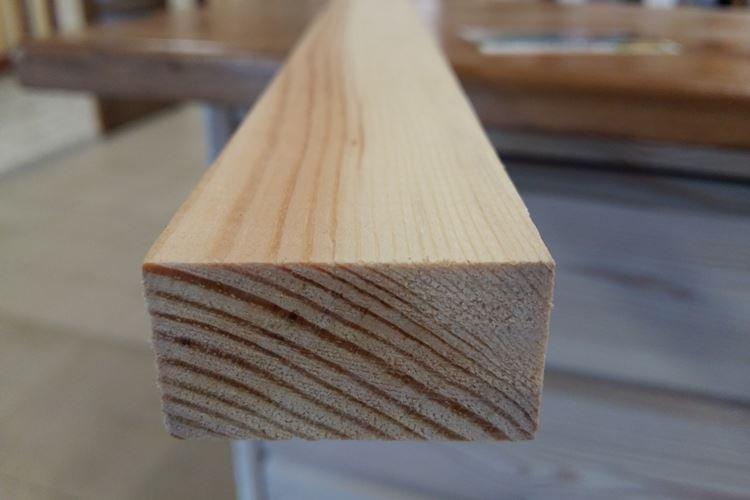
Stationary cages with insulation and a canopy are installed on the streets. Rabbits can live in them all year round, only good wind protection and optimal humidity are needed. And there are year-round cages for premises, but the room should have good lighting for at least 8-10 hours. An alternative is combined mobile structures that can be rearranged depending on the season.
We recommend using wood blocks for the frame and support, and plywood, boards and metal nets for the walls. Wood or plastic panels are suitable for decorative outdoor decoration. At least part of the floor should be mesh for easy cleaning.
The main thing is not to use pure metal, because it gets very hot in the heat, and freezes in winter. We also do not recommend chipboard, cheap plywood and other questionable or artificial materials that can be simply toxic to animals.
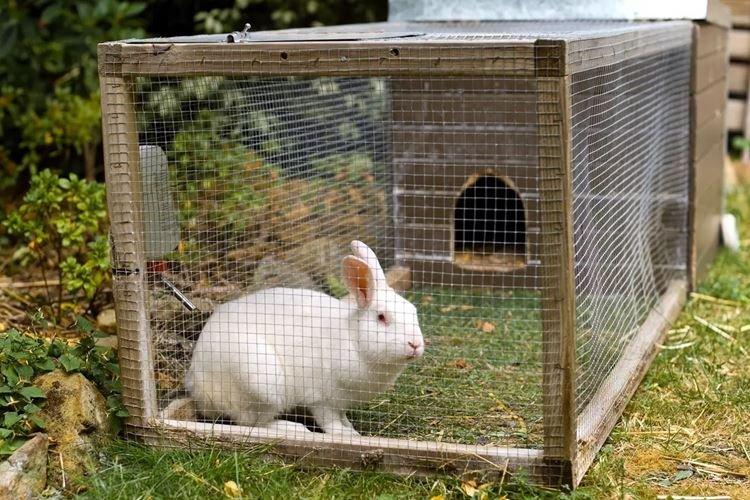
Stages of making cages for rabbits
For adult rabbits or small rabbits, simple one- or two-section cages are sufficient. You will need wood, plywood sheets, galvanized metal fasteners and branches with hay to fill.
Training
Use standard beams 40x40x3000 or 50x50x3000 mm and plywood with a thickness of 9-12 mm. Steel pipes from 2 cm are suitable for strengthening multi-tiered structures, but they cannot be in contact with animals. The mesh should be galvanized and rather small - a maximum of 20x20 mm, or better less. Use self-tapping screws with a length of 30-70 mm to fasten the elements.
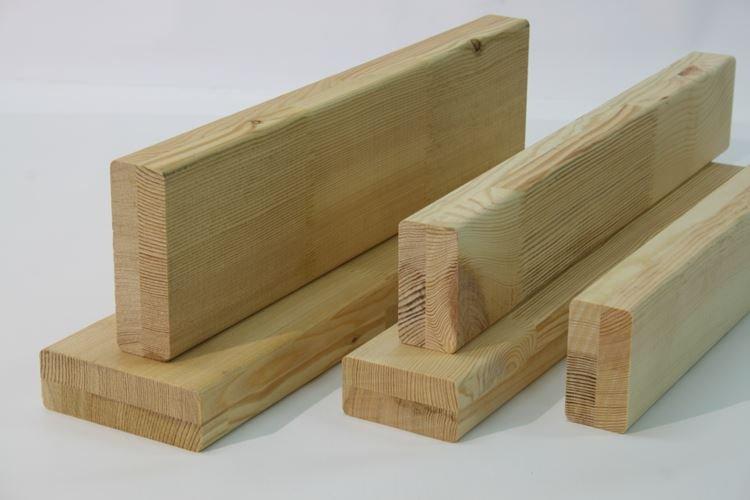
Frame
The dimensions of the simplest rabbit cage are from about 120x70x50 cm, which is quite enough for the animals to feel comfortable. To begin with, make a frame about one and a half meters long and 70 cm high.Separate the back and front of the cages - 35 and 55 cm each.
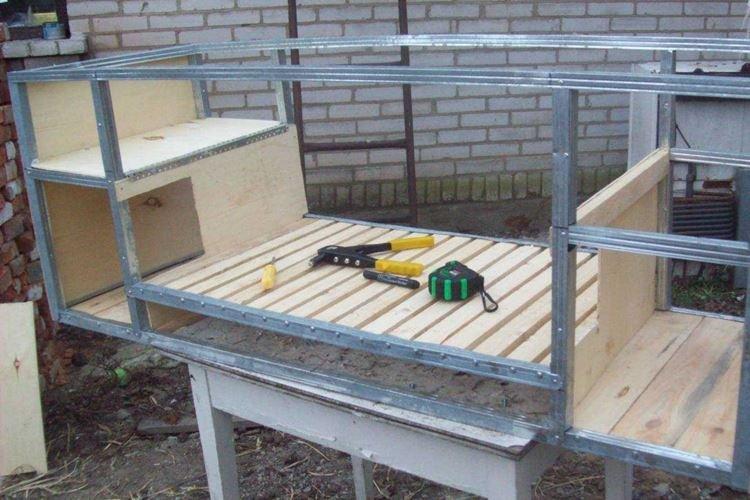
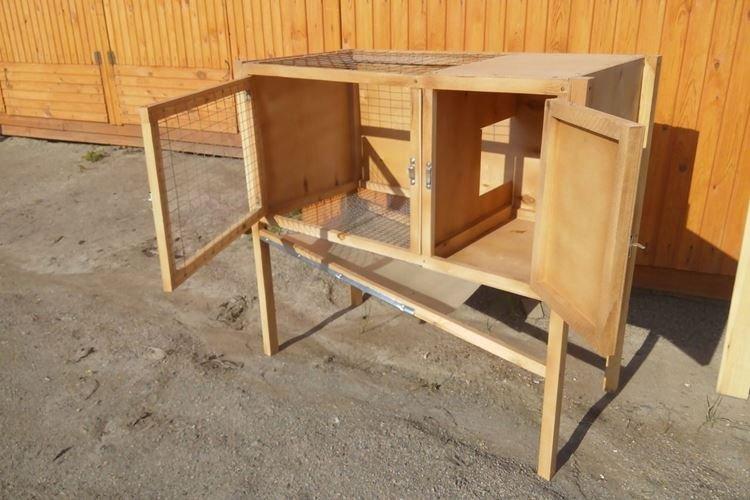
Internal sections
We combined the entire frame with plywood and separated a section for a nest inside, where it would be possible to put a house and a mother house for a rabbit. Place the same plywood partition between the sections, but with a passage. The doors from the cage should be on both sides, but in the nest there is a solid one on the hinges, and in the usual compartment there is a fine mesh.
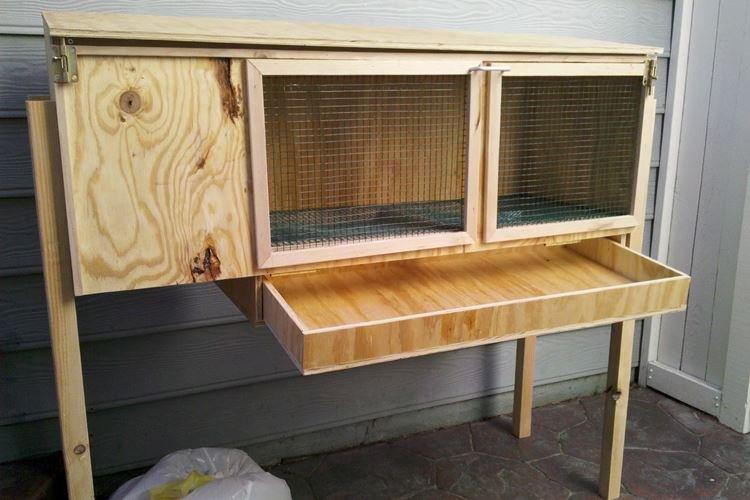
Floor and roof
The solid floor in the cage is not very easy to clean, so make it like this only in the nest compartment. In the main section, use a fine mesh or wooden slats with small gaps, and put a spacious pallet underneath. Make the roof out of plywood, polycarbonate or slate, and fix it with hinges so that it is easy to remove it.
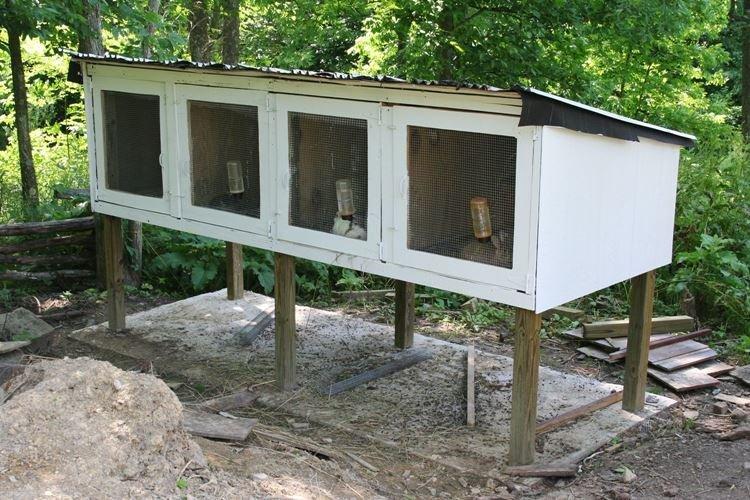
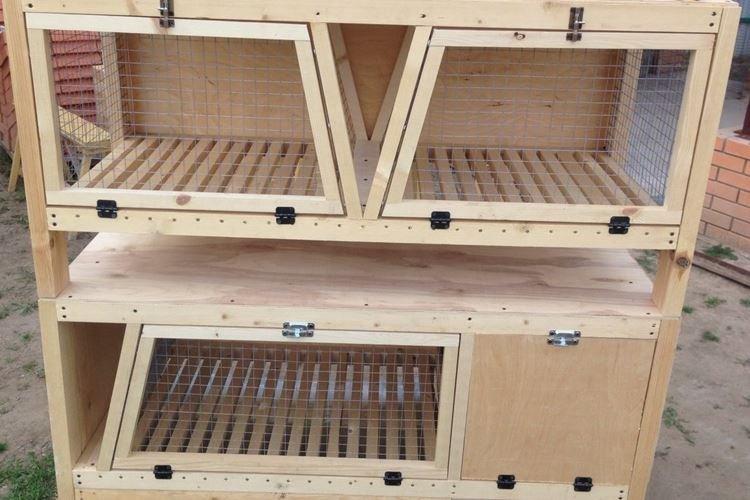
Cage installation
On the street, the cage must necessarily stand on beams at least 70 cm high so that pests, rodents and other animals cannot get to the rabbits. Sand down any irregularities and abrasions to prevent injury to the rabbits.Keep rabbits of approximately the same age, size, and similar temperaments in the same cage.
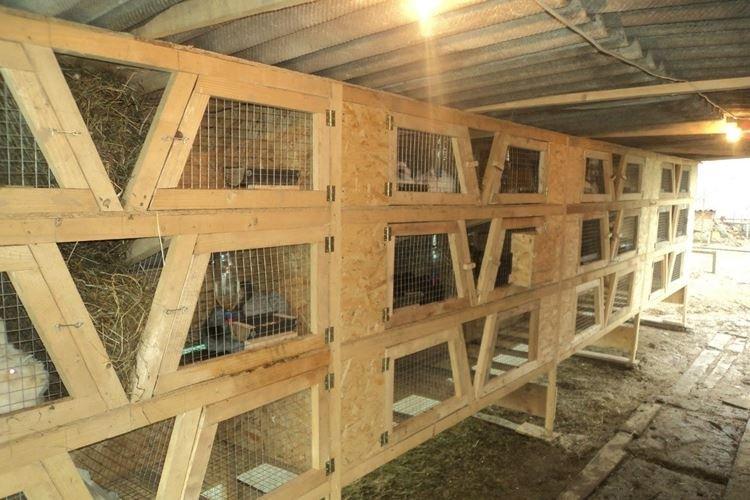
DIY rabbit cages - photos and ideas
Rabbit cages are actually much more diverse, and in addition to universal ones, there are specialized ones - for breeding, young animals or industrial needs. We are sharing a few more ideas that will be useful to you, and which you can also do with your own hands!
Single-tier cells
This is the simplest rectangular cage with support bars for safety and ease of maintenance. The roof is usually also the simplest single-pitched roof - the remnants of slate will do. Instead, you can use any roll coating, but a ramp is necessary for water drainage. Install a pallet with a waste gutter at the bottom.
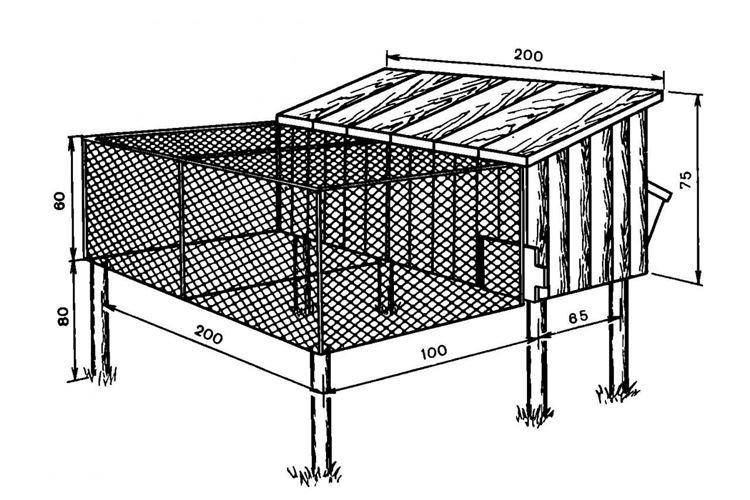
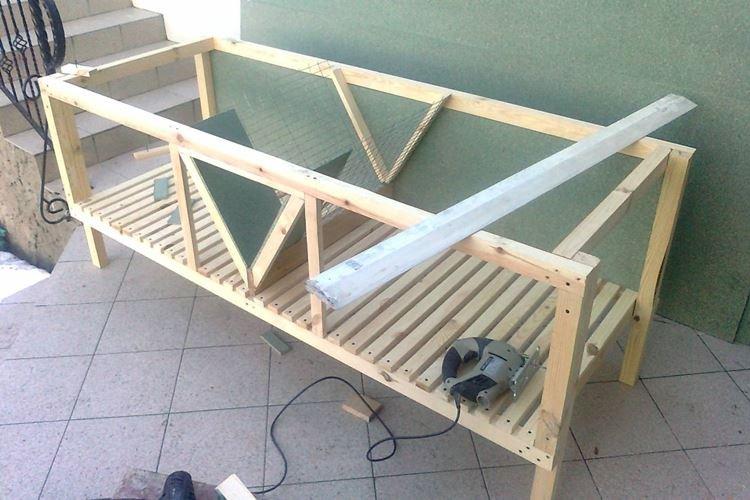
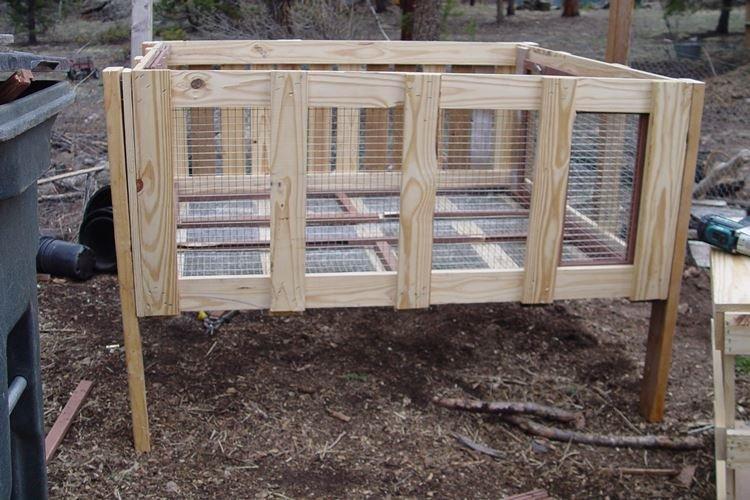
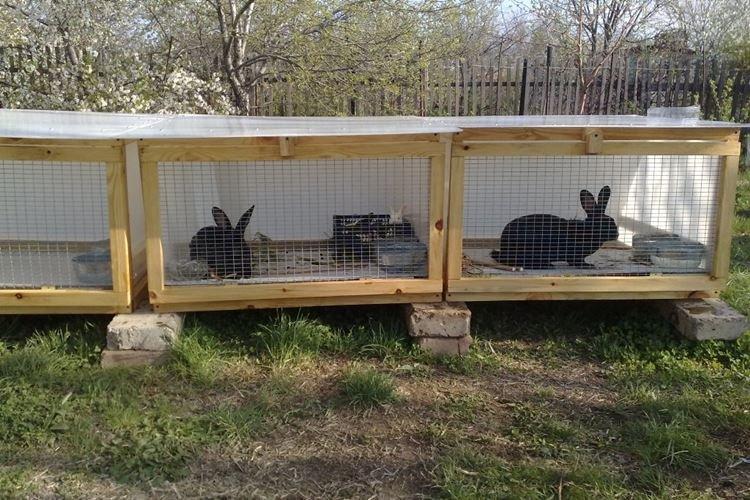
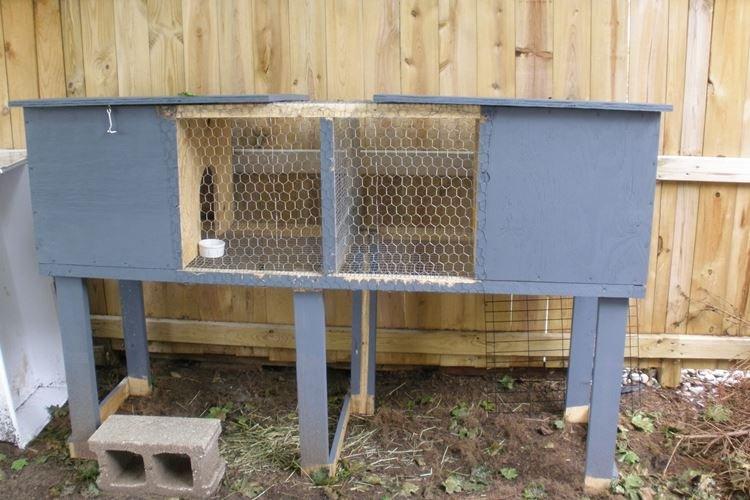
Multi-tiered cages
In fact, the number of tiers in the cells can be absolutely any - and such cells are collected one on top of another like a constructor. They are also called "sheds", and between the blocks it is necessary to equip partitions and waste drains. This significantly saves space and simplifies cleaning and maintenance, because all the animals are in one place.
To support a heavy structure, instead of beams, stack bricks on top of each other. Street sheds must be insulated so that the rabbits do not freeze or overheat.
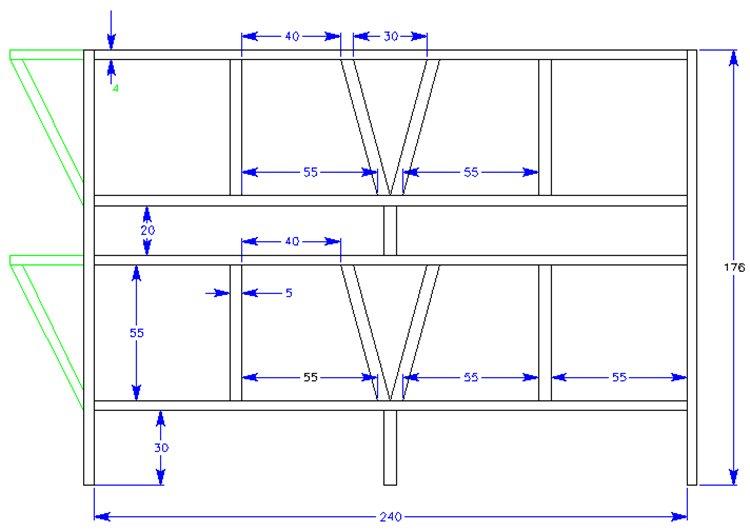
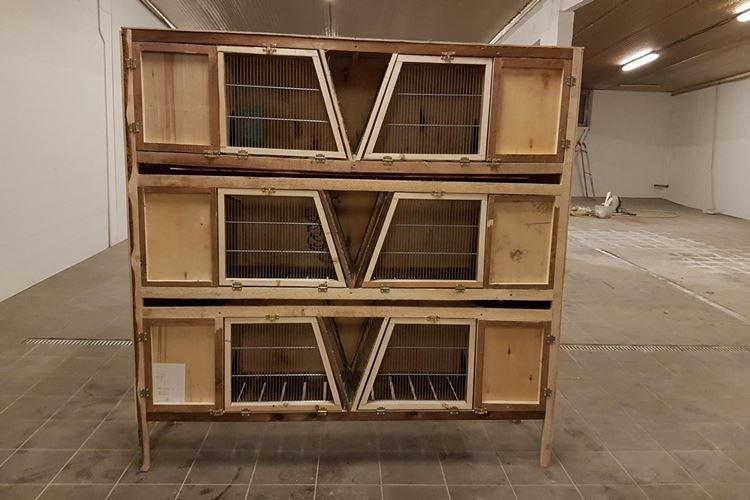
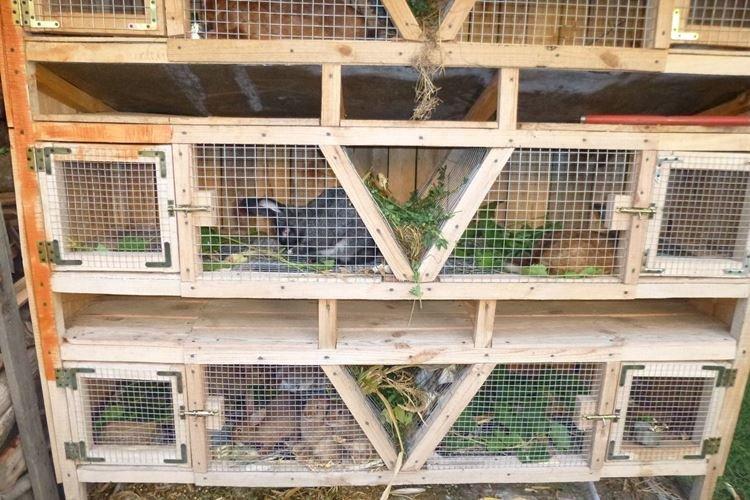

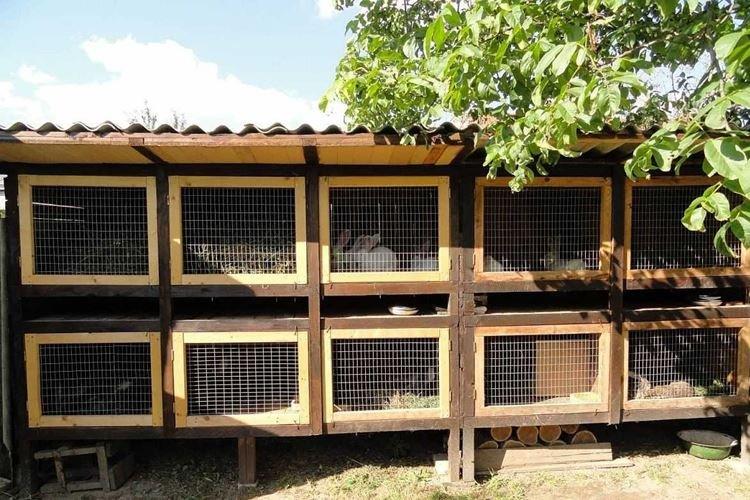
Cages for young animals
For small rabbits up to three months old, the simplest single-tier cage is sufficient at the rate of about 0.15 square meters per one rabbit. There can be from eight to twenty pieces in total. The optimal height of such a cage is from 35-40 cm.
It is much more convenient to keep small rabbits together, and you can even settle several offspring of the same age at once - up to twenty pieces. Insulation and protection from the wind is imperative, because babies can get sick faster. Baby rabbits attract all predators, including domestic cats, so make sure the cage is safe.
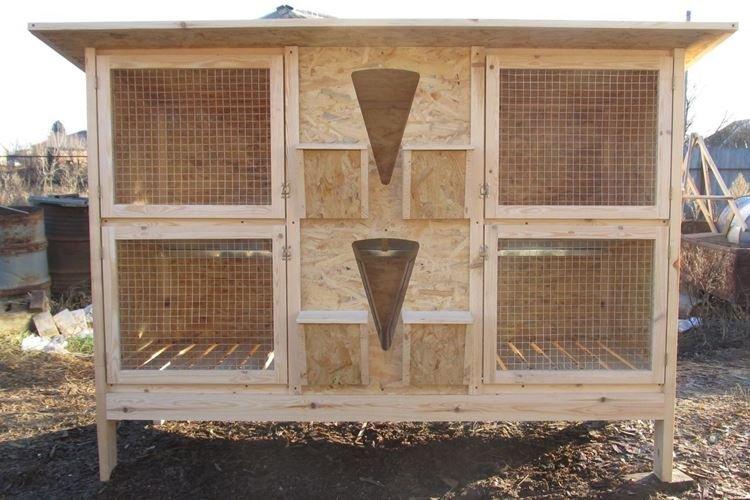
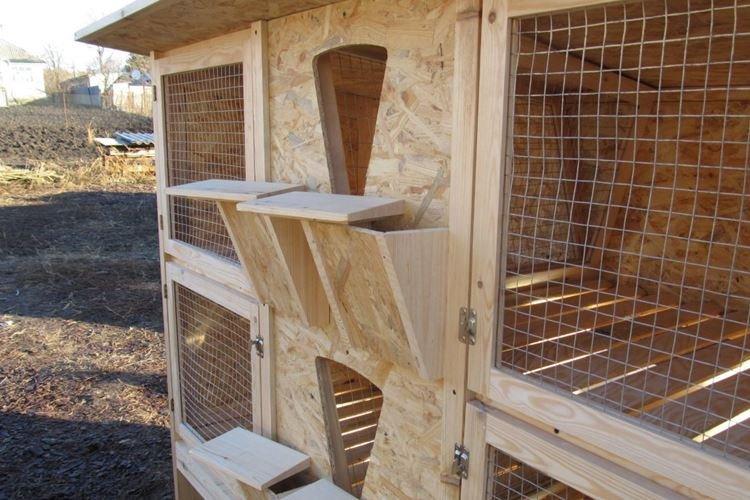
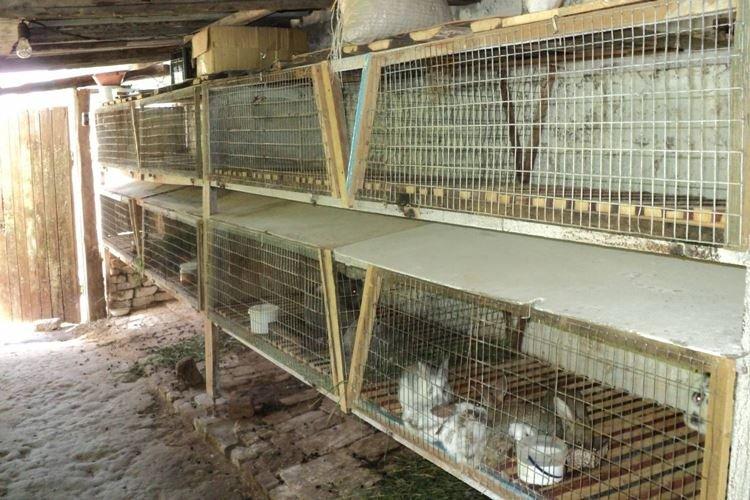
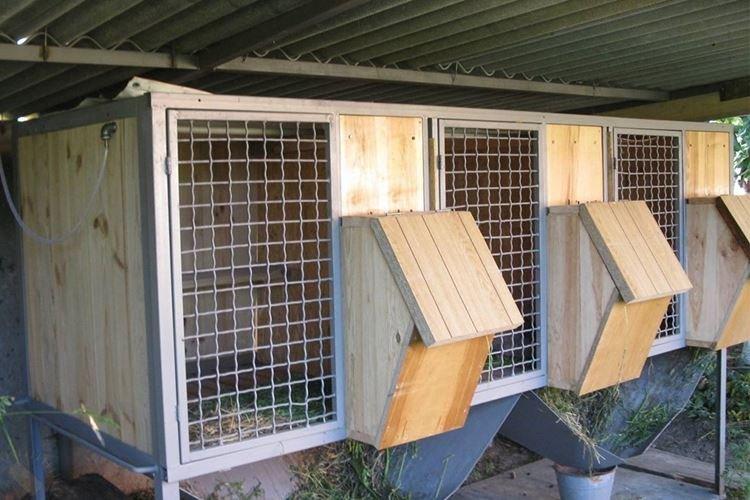
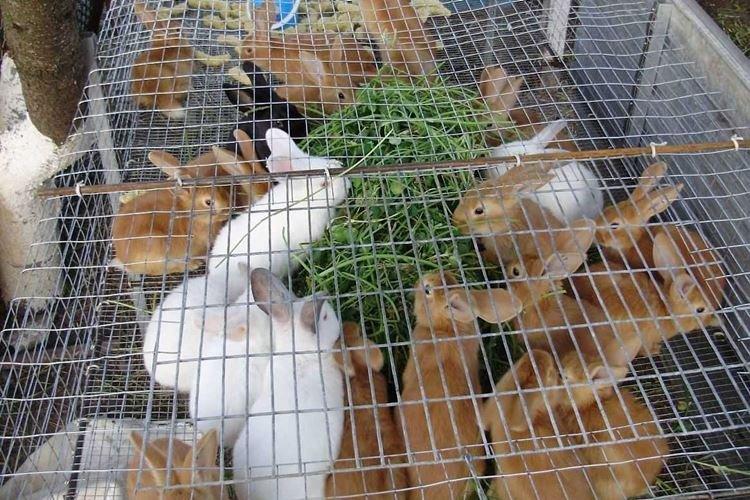
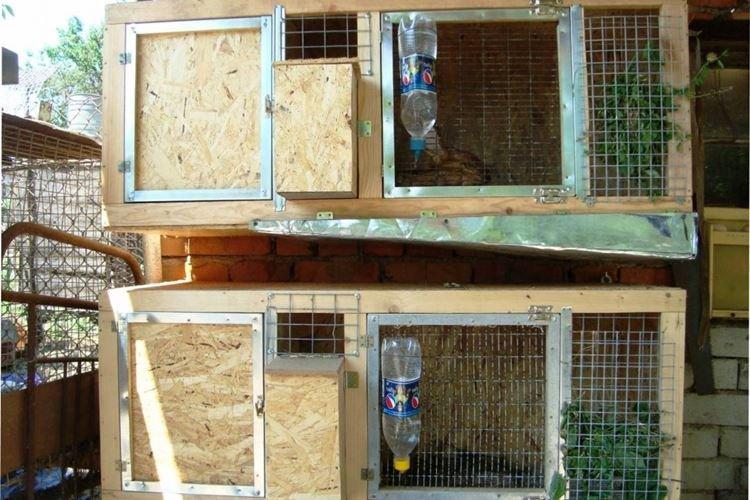
Dwarf rabbit cages
For small decorative species, smaller cells are sufficient. Let the back wall be 15 cm lower than the side ones - install it so that there is a gap below. Attach several wide slats to the bottom of the cage, and lay a fine mesh on top. Make a retractable roof and a door from the same mesh.
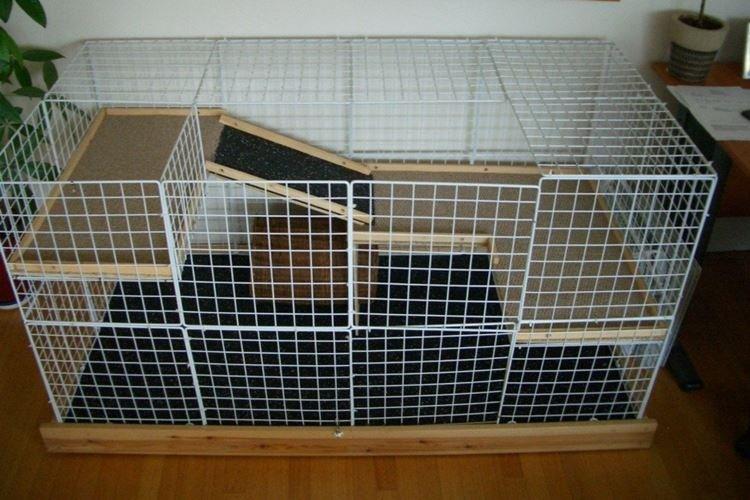

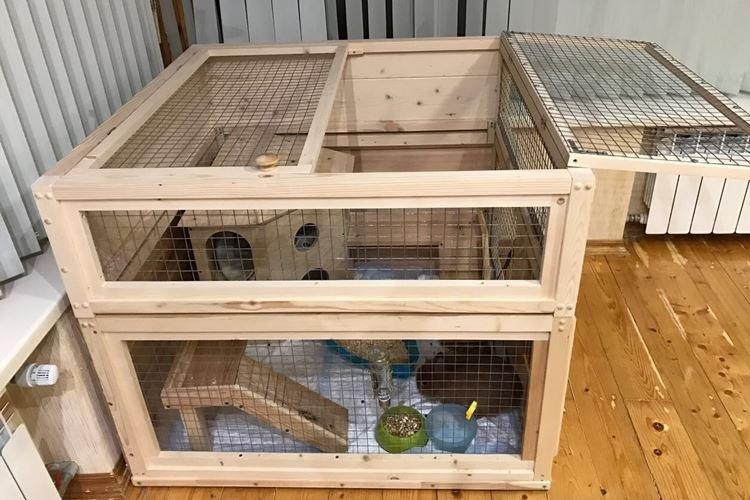
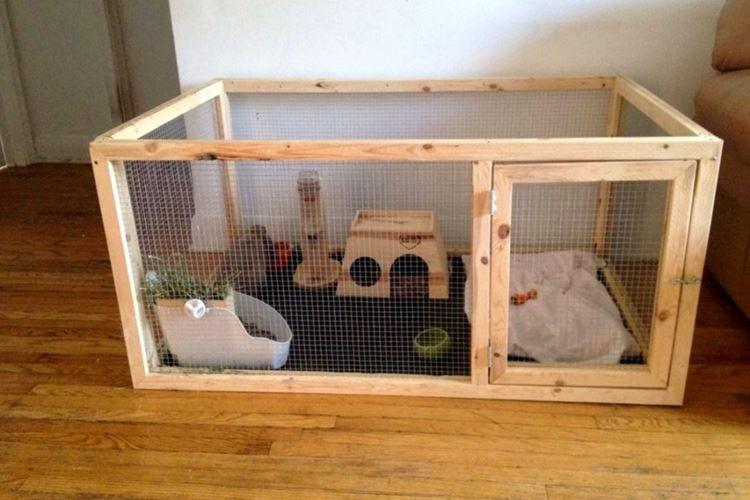
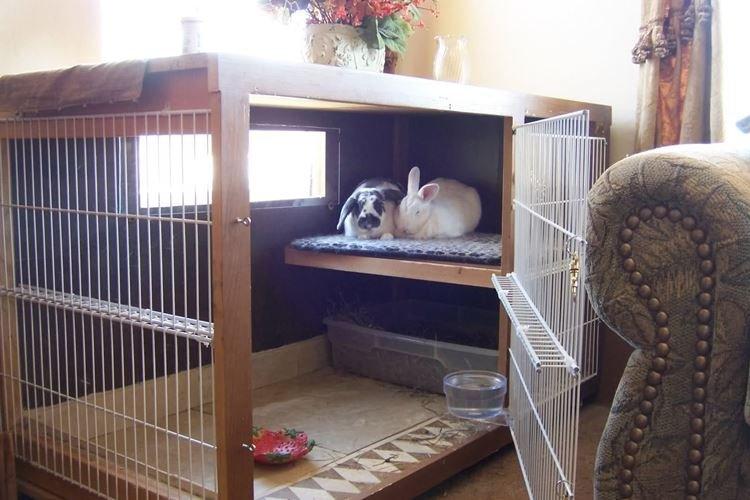
Cages for large rabbits
For the Californian breed or giant rabbits, larger cells are needed, because they grow up to 5-7.5 kg. These are mainly rabbits that are bred for meat. In ordinary cages, they are too cramped, and it is impossible to keep giants with ordinary small breeds.
For an adult, you need from 0.5 square meters, and for one brood of rabbits - about 1.4 square meters for all. Usually in the offspring of up to eight cubs - and in this case, we do not recommend combining several families. Use metal corners and sheet metal to reinforce multi-tiered structures.
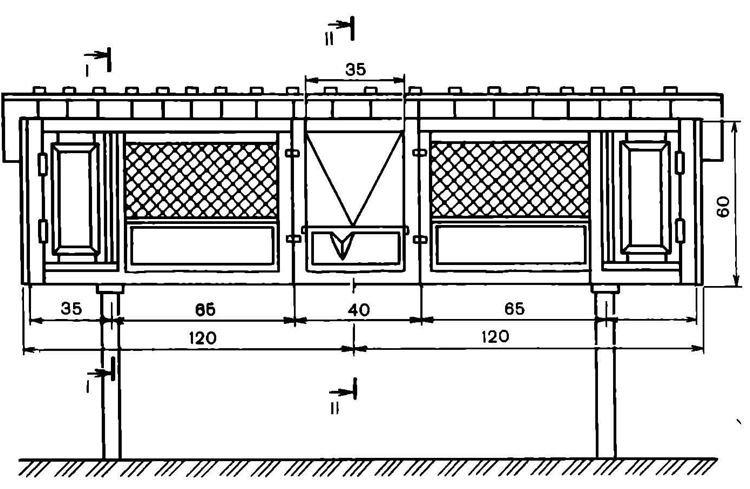
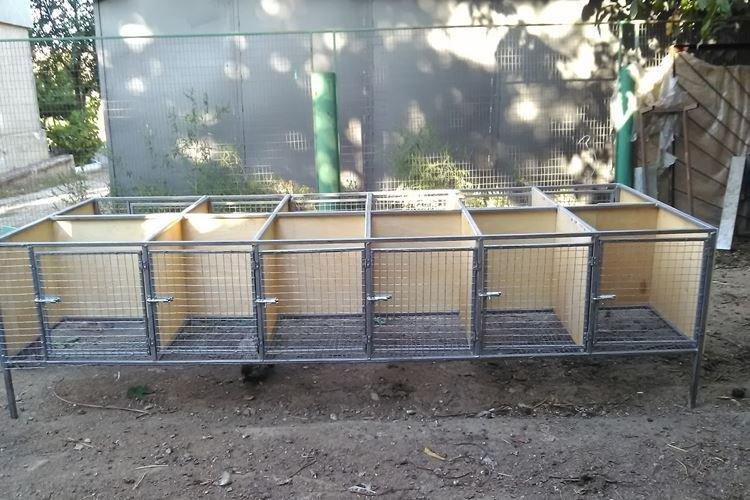

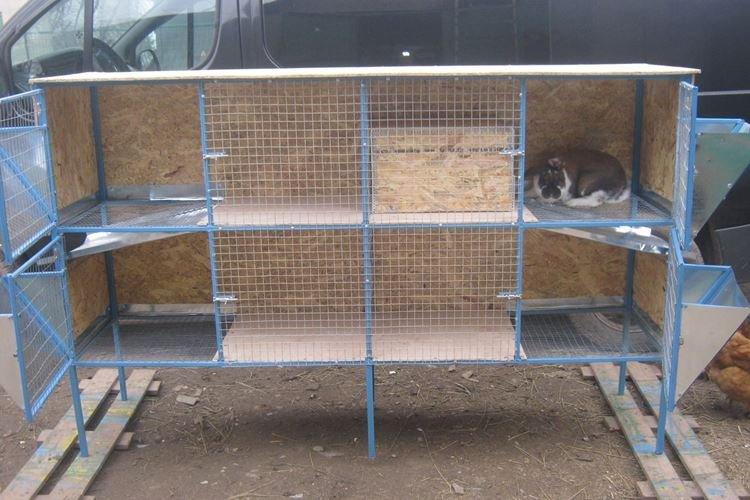
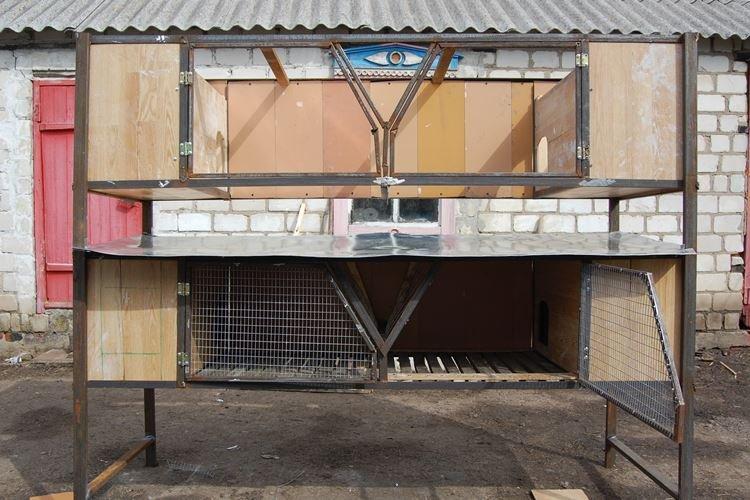
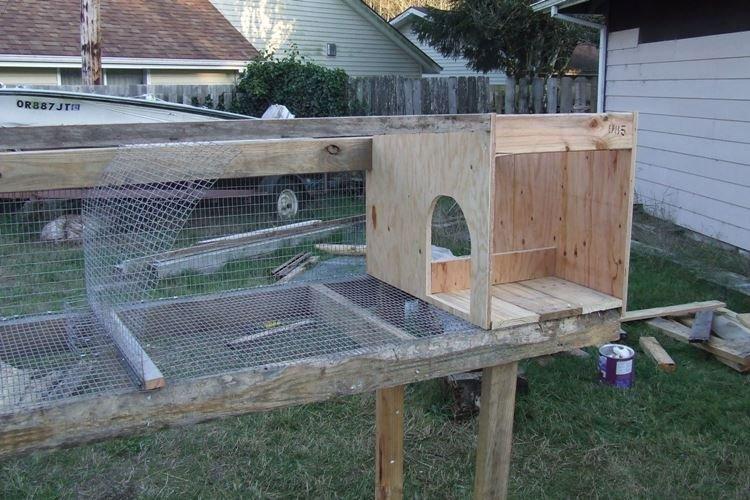
Cages for okrol
These are specialized cages for pregnant rabbits that need peace and quiet. Single-tier cages for the enclosure are hidden in the barn against the wall away from the windows. There must be a section for the mother liquor and heating.
Females at this time are completely unpretentious to the conditions, but they require peace and quiet, because in their natural environment they hide in holes in which it is warm and dark. Do not use electric heaters or radiators for heating - hang up an ordinary lamp or lay special cables.
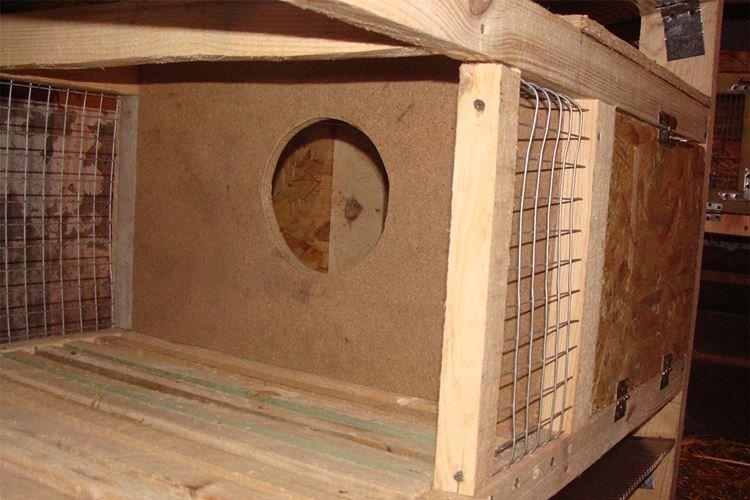
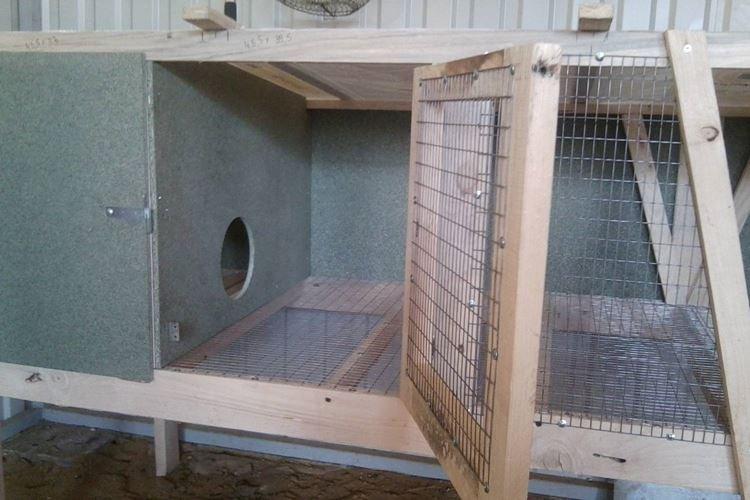
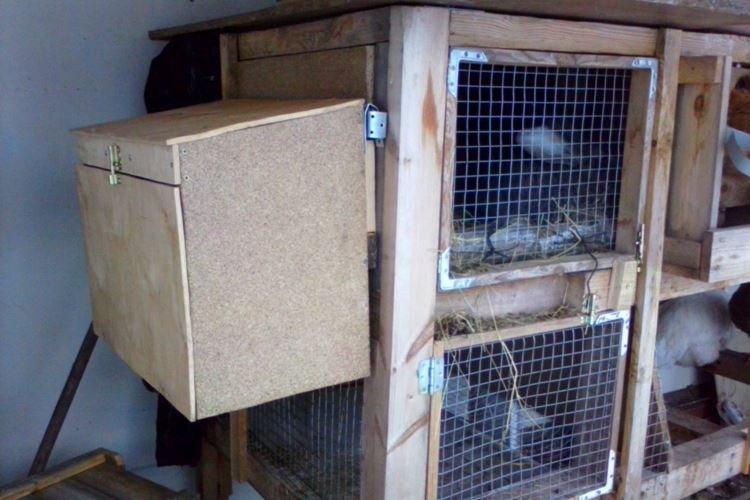
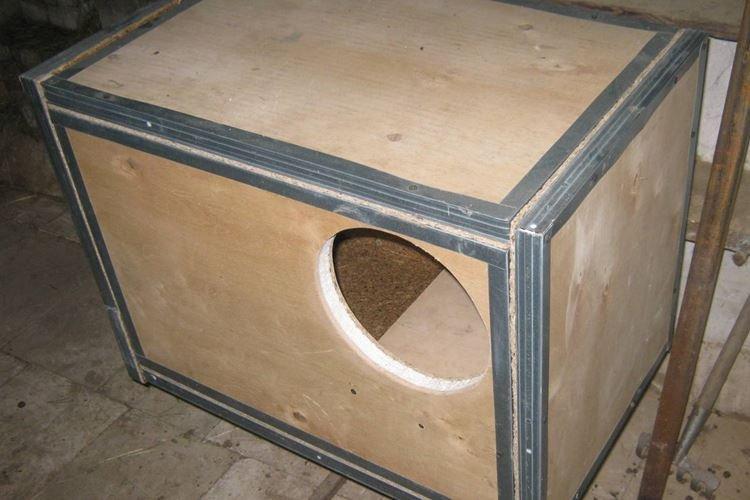
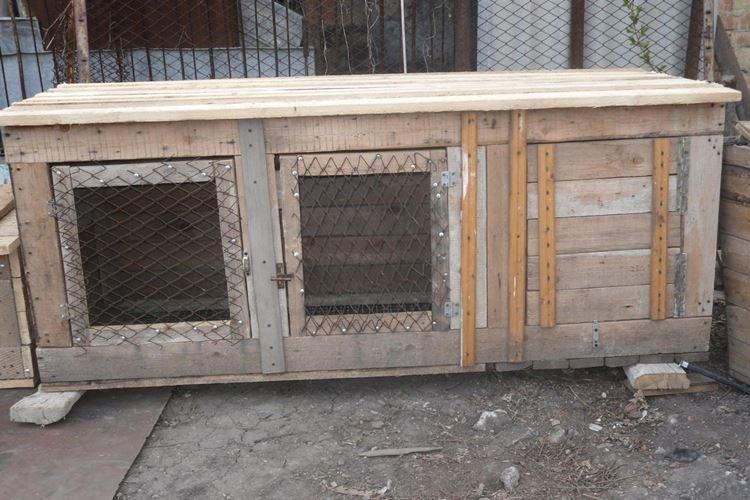
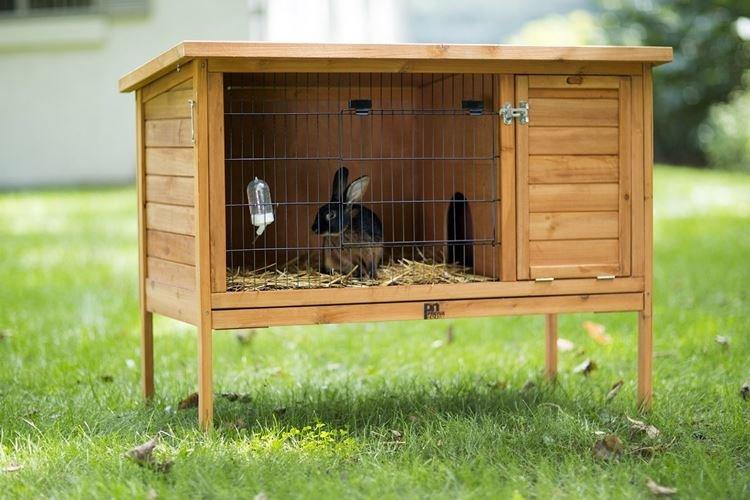
Mikhailov's cells
This is a whole mini-farm for mass breeding of rabbits with minimal effort on your part. In such cages, automated feeding, cleaning and heating systems are assumed. At home, such farms are rarely made, because they are focused on industrial use.
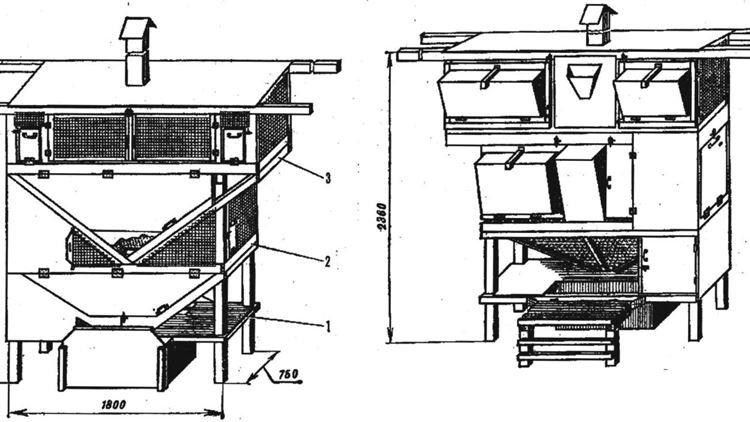
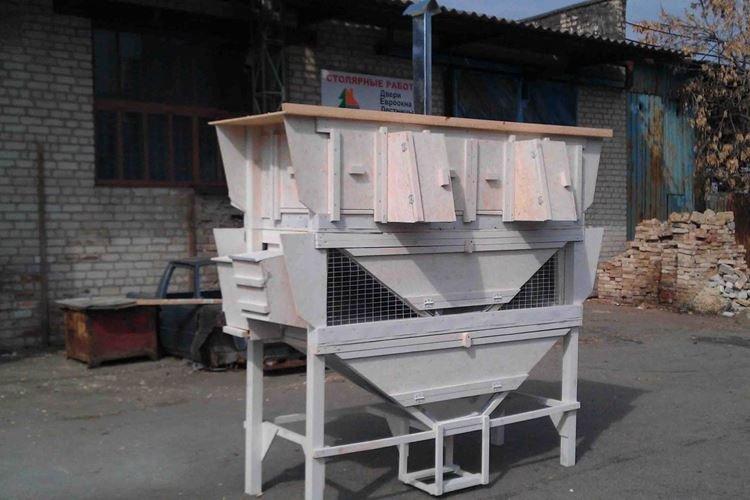
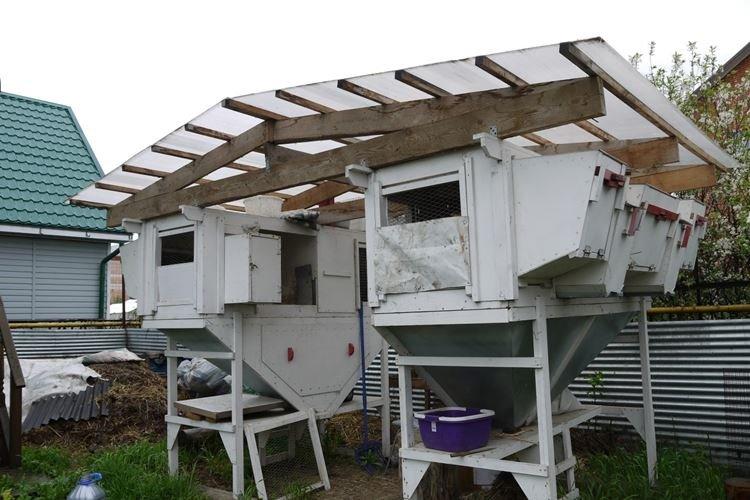
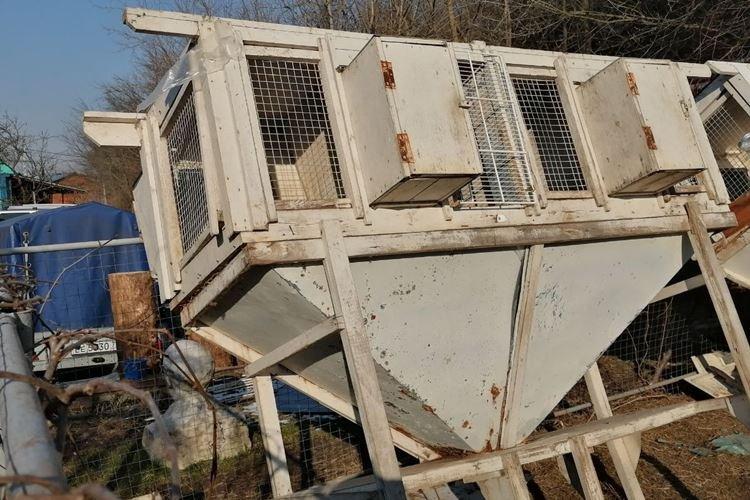
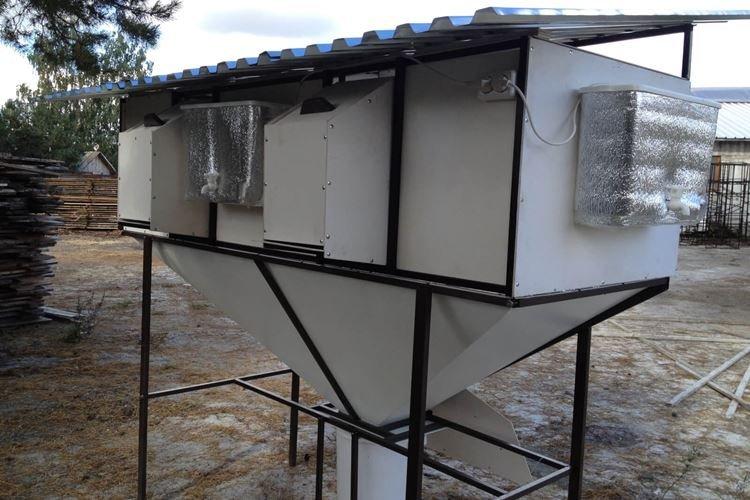
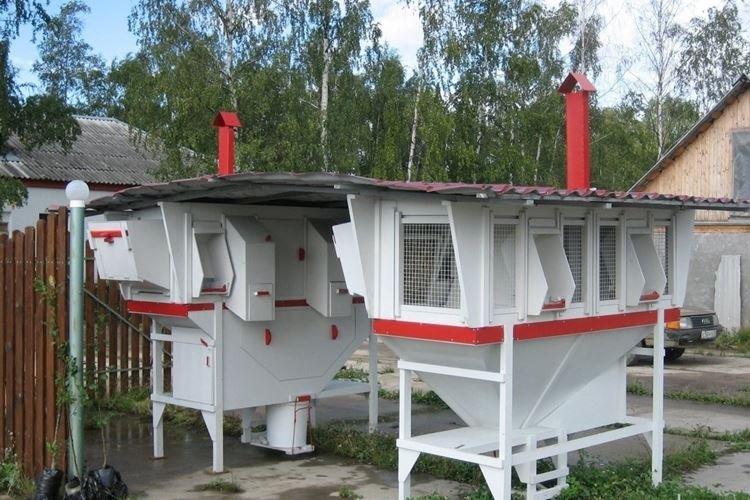
Mating cages
Different-sex rabbits need to be kept separately, but they are brought together for mating. For convenience, cages for adult rabbits are mounted in one multi-tiered structure and a removable partition is installed between them. So the animals do not have to be constantly relocated back and forth.
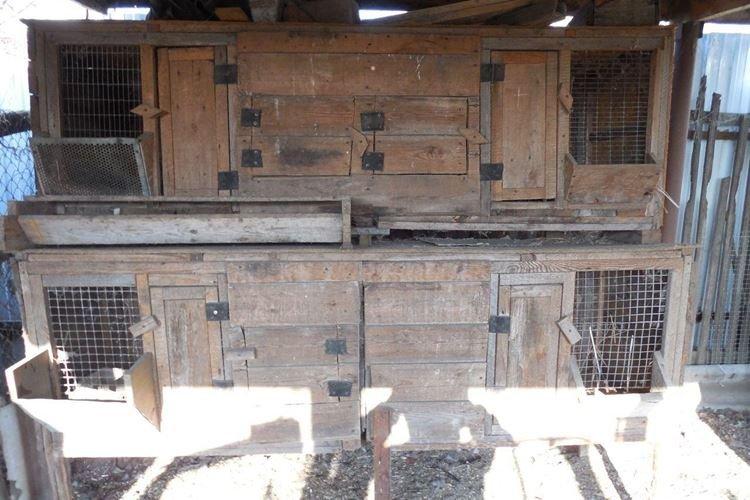
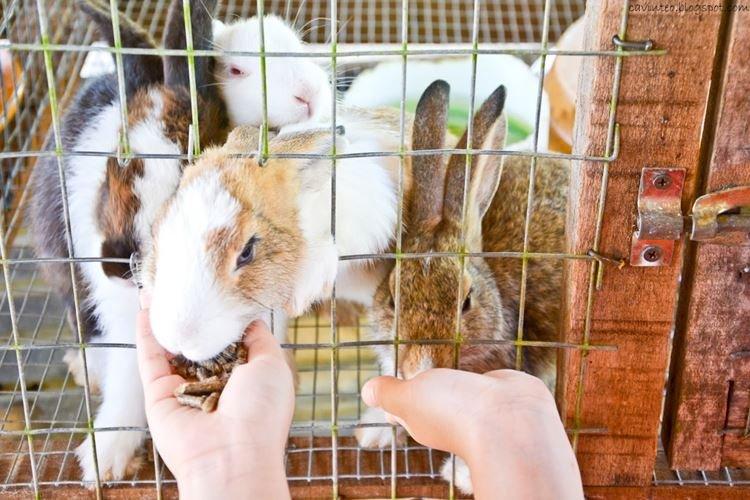
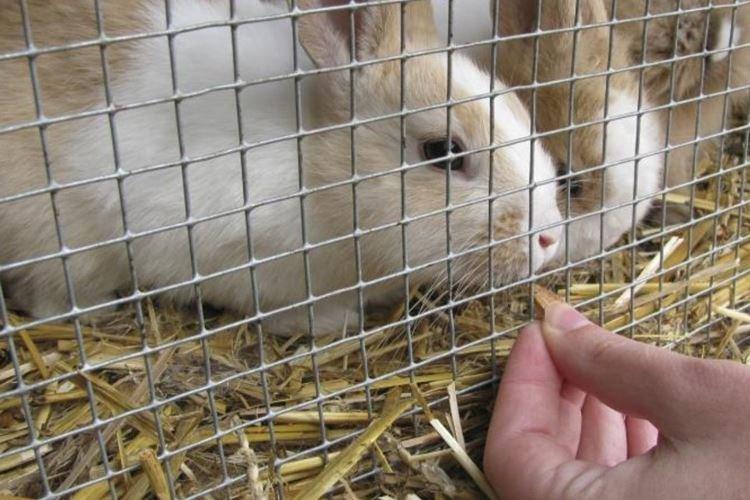
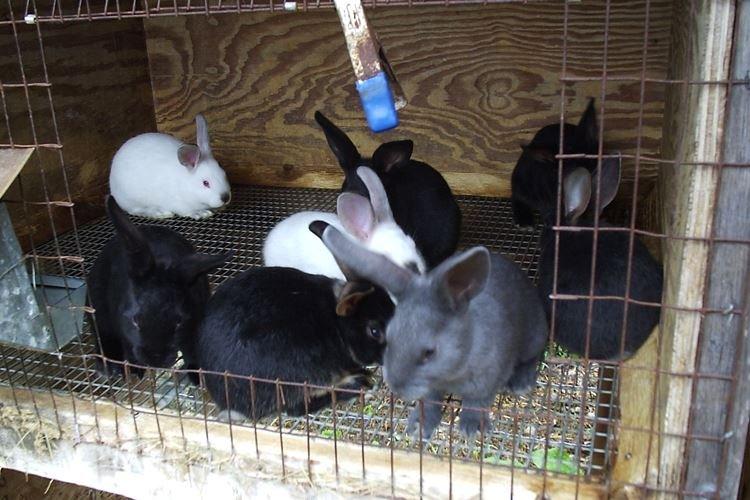
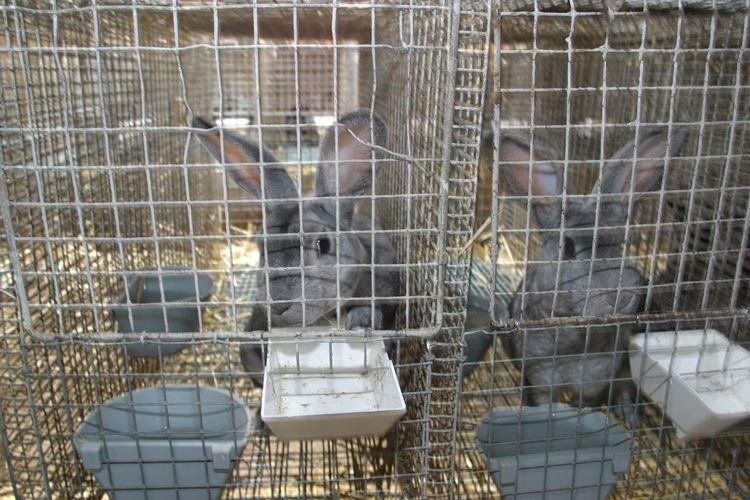
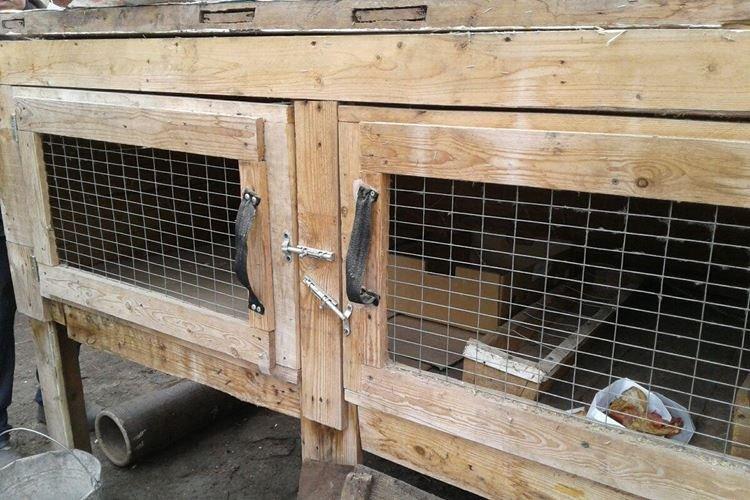
Zolotukhin cells
This is the development of a well-known rabbit breeder for household tasks, in contrast to Mikhailov's cells, which are oriented on an industrial scale. The cages have a solid slate or plywood floor without pallets. Only at the back there is a narrow mesh insert up to 20 cm wide, and according to many years of research, it is there that animals themselves will learn to dump their waste.
The classic cages that Zolotukhin himself uses are three-tiered structures of six blocks. They are installed on top of each other in terraces with a small indentation of the width of the mesh in the floor. The back walls of the first two tiers are mounted at an angle so that the waste flows from above to the bottom, and not to the lower tier.
A separate section for the mother house is not provided - the rabbit will equip herself a house on her own. For the winter, you can make a small mobile house in the form of a box made of plywood 30x30x16 cm. The feeders are installed on the doors to make them easier to clean and fill.
